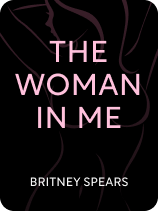

This article is an excerpt from the Shortform book guide to "The Woman in Me" by Britney Spears. Shortform has the world's best summaries and analyses of books you should be reading.
Like this article? Sign up for a free trial here.
Why is sexism in the entertainment industry such a problem? Are there double standards for men that women wouldn’t be able to get away with?
In The Woman in Me, musician Britney Spears uses her own narrative to point out the favoritism toward men in the entertainment industry. The differing treatments between men and women stand out when it comes to their dating lives, mental health issues, and physical appearances.
Learn what else Spears discovered about the mistreatment of women in an industry where men aren’t held to such high standards.
Misogyny in the Entertainment Business
A problem Spears ran into during her career is an underlying problem in society as a whole. Misogyny can be found along any career path, but in show business, its power is shown in stark relief. Spears discusses how the media puts an excessive focus on women’s bodies, how male artists demonize women to advance themselves, and how male performers are allowed to act in ways for which women are often condemned.
Spears recalls that from the start of her career, she noticed the sexism in the entertainment industry. The interview questions she received were heavily focused on her appearance, while her male contemporaries were asked about other topics. Spears was often criticized for appearing too sexy while also being chastised for any blemish in her looks. During and after her pregnancy, the press hounded her about whether she’d regain her youthful beauty. All through her life, Spears says that others have treated her body as something they had a right to criticize and control.
(Shortform note: The preoccupation with women’s bodies that Spears describes has taken place for longer than modern media has existed. In Ways of Seeing, John Berger shows how the objectification of women was prevalent in the last five centuries of European art. In paintings commissioned by wealthy men, nude women were depicted as passive, alluring subjects of attention. These women were “owned” by the men who owned the paintings, and instead of depicting real women’s bodies, these images showed a fantasy ideal of the women that men wanted to possess, not unlike modern-day airbrushed pictures of sexualized pop stars.)
Putting women down isn’t restricted to the press. Spears writes that she experienced this when Timberlake used a distorted depiction of their romance to increase publicity for his new album, boosting his image by tarnishing hers. Timberlake never mentioned his cheating on Spears, and neither did Federline when he painted Spears as an unfit wife and mother while promoting his debut album. Tellingly, the press didn’t interrogate the men in Spears’s life about their failings as it often does to women in the same situation.
(Shortform note: As an example of what Spears’s male counterparts in music’s big leagues get away with, Keith Richards’s autobiography Life opens with a story of the Rolling Stones being caught possessing drugs in a small, rural town in the southern US. The police were so enraptured by the Stones that the band had time to dispose of their drugs and the charges against them were dropped. Compare this to what Spears recalls about how she was treated for using over-the-counter supplements and medication.)
In general, Spears points out that male performers in the entertainment business are held to a lower standard than women. Even worse, men’s bad behavior is often celebrated as part of the “sex, drugs, and rock ‘n roll” lifestyle. Male artists are rarely, if ever, shamed for lewd behavior, drug use, and wild parties—rather, for them such things are status symbols. Further, while some male artists have paid a price for their behavior, none have had their personal freedoms taken away as Spears’s were for anything short of outright criminal actions.
| Misogyny and Music While Spears writes that some of Timberlake’s and Federline’s lyrics were directed solely at her, many lyrics are directed against women in general. A study published in 2023 used a language processing algorithm to analyze nearly 400,000 English-language songs published from 1960-2010. The results showed a sharp rise in sexist lyrics in popular music beginning in the 1980s. When narrowing the data to songs that charted as popular singles in Billboard Magazine’s ranking system, over 60% of songs by male artists in 2010 contained sexist lyrics. Meanwhile, many female artists have used their success to fight back against sexism in the music industry. Taylor Swift began writing songs about the sexism she’s had to endure in her career. Tori Amos turned her popularity in the ’90s into a platform to support the Rape, Abuse & Incest National Network after her personal experience with sexual violence. Perhaps the most prominent feminist icon in music, Madonna, has battled the recording industry’s sexism since the 1980s, often rewriting the book on how to portray female sexuality in song. |

———End of Preview———
Like what you just read? Read the rest of the world's best book summary and analysis of Britney Spears's "The Woman in Me" at Shortform.
Here's what you'll find in our full The Woman in Me summary:
- The key takeaways of Britney Spears' memoir about her career and private life
- How the media's portrayal of Spears differed from her experiences
- How the music industry treats women differently than men






